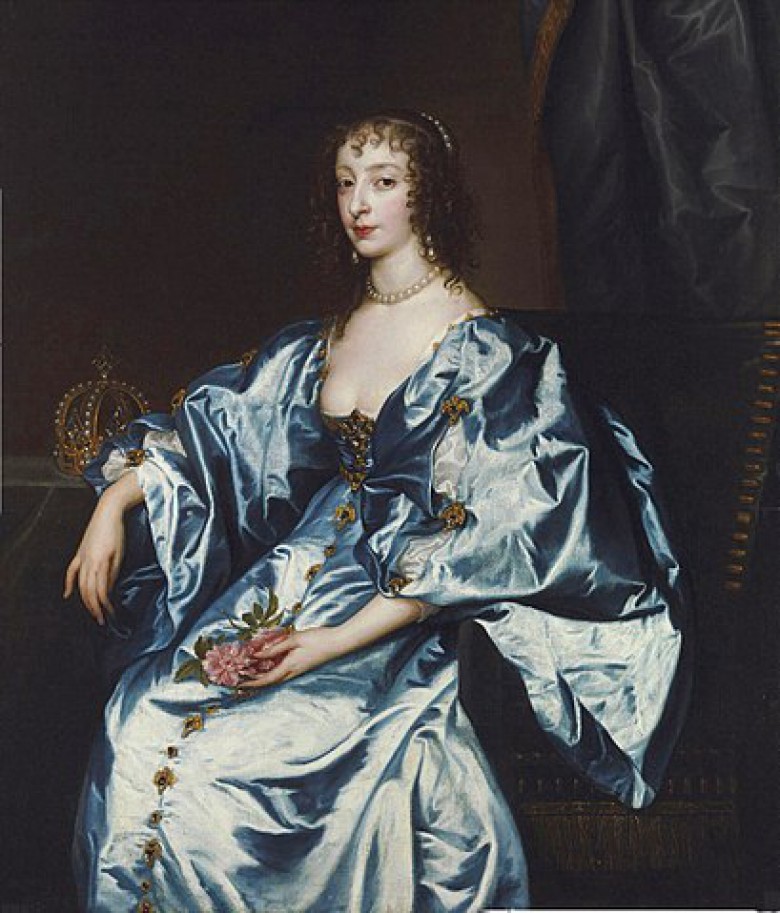13th June 2018
Today in 1625, Charles I married the French princess Henrietta Maria. She was the youngest daughter of Henry IV of France and Marie de' Medici, and was just 15 when she married the 24 year old Charles. They had been married by proxy on 1 May, after which Henrietta made the journey from Paris to England. She was accompanied by a large entourage and brought with her many of her expensive possessions, including diamonds, dresses and furniture.
Henrietta was not Charles’ first choice of wife. He had originally intended to marry the Infanta Maria Anna of Spain. But negotiations for this marriage dragged on, until Charles made a personal visit to Spain in an attempt to secure the Infanta, travelling incognito with George Villiers, Duke of Buckingham. They failed to bring the Infanta back to England – much to the delight of many, as anti-Spanish and anti-Catholic sentiment ran high.

With the Spanish match unsuccessful, Charles looked to France for a bride and began the negotiations to marry Henrietta. During this time his father, James I, died and Charles ascended to the throne.
Henrietta was a staunch Catholic, who openly practised her faith. In England, the fear and distrust of Catholics had not lessened, and there were fears she would convert Charles. The marriage itself had been allowed only with a special dispensation from the Pope, and Henrietta’s religion caused friction from the start – she would not have a coronation as her Catholicism barred her from taking part in the Anglican service.

The marriage between Charles and Henrietta did not start well, with Henrietta resentful of her husband’s close relationship with Villiers. It was only after the Duke was assassinated in 1628 that Charles turned to his wife and the two became closer. They would have a total of nine children together, including future English kings Charles II and James II.
Henrietta was also a great patron of the arts, with a keen eye for art collecting, and she and Charles amassed a great collection. She also enjoyed masques, taking part in many herself, as well as music and garden design. The John Tradescants, both elder and younger, would be among those employed by her.
In the years leading up to the English Civil War, dislike of Henrietta only increased until she fled to Europe in for safety in 1644. She continued to actively support her husband’s cause from abroad until he was executed in 1649.


Images: Charles I and Henrietta Maria with their two eldest children, Prince Charles and Princess Mary, by Sir Anthony Van Dyck, 1631-32, RCIN 405353, Royal Collection Trust / © Her Majesty Queen Elizabeth II 2018. Charles I, Henrietta Maria and Charles, Prince of Wales (later Charles II), by Hendrik Gerritsz Pot, c.1632, RCIN 405541, Royal Collection Trust / © Her Majesty Queen Elizabeth II 2018. Portrait of Charles I and Queen Henrietta Maria, by Anthony van Dyck, 1632, Kroměříž Castle, via Wikimedia Commons. Princess Henrietta Maria of France, Queen consort of England, by Anthony van Dyck, c.1636-1638, San Diego Museum of Art, via Wikimedia Commons.
